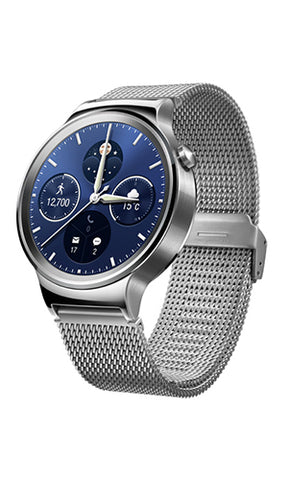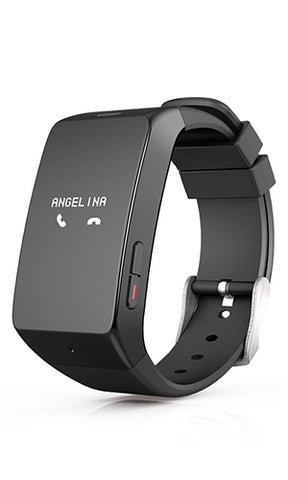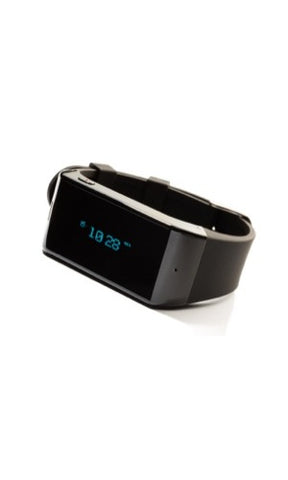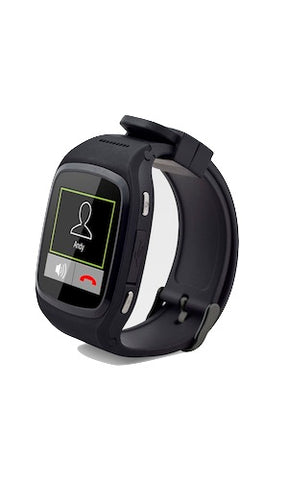Wearables Scorecard: How Successful Will Your Wearable Be?
Written By
Wearables.com
The following is a guest post by Dan Ledger of Endeavour Partners and Dan McCaffrey of SyncStrength.
We really enjoyed reading Tim Chang’s piece in TechCrunch on the wearables playbook. It was full of very thoughtful and relevant advice.
We’ve obviously been very curious about what it takes to succeed in the wearables space, and by succeed, we mean to launch a device that people wear, use and derive benefit from over the long run, which is hard.
As we’ve been watching various widgets come and go over the last few years, we’ve begun to see a simple rubric evolve that so far has been a telling predictor of success. Thus, we’d like to present you with the Wearables Scorecard, a rough predictor of future success in the wearables space.
Are your pencils ready? If you have a smart watch that has a keyboard on it, and you intend to use your smart watch to keep score (just because you can), you begin with a score of -10.
| Are you Google? | If yes, add 10 | Google’s play with Android Wear is strong for three reasons: 1) Google Now has evolved into one of the most robust contextual insight engines that’s able to deal with the messiness of our lives; 2) they’ve done a beautiful job of constraining the user experience; and 3) they’re enabling an ecosystem of hardware players that goes beyond gadget manufacturers. The breadth of styles that we’ll see emerge will resonate with a broad audience. The insights that Google is uniquely positioned to deliver to your wrist will change the industry. Oh, and they already have a massive developer ecosystem. |
| Are you Apple? | If yes, add 7 | If Apple does in fact release a smart watch, it will likely be beautiful, elegant and do magical things with sensors. However, the wrist is a different piece of real estate than the pocket and a one-style-for-all may be less successful on the wrist over the long run. |
| Are you Samsung | If yes, add 5 | Samsung is vertically integrated, has a rich portfolio of relevant technologies, and has a large war chest that will enable them to get into new and interesting form factors that others cannot. However, reading through the Tizen SDK documentation, we’re concerned that they will struggle getting the user experience right, and building a developer ecosystem behind them. Of course they can always fall back on Android Wear. |
| Have you ever designed a piece of hardware for someone’s wrist that didn’t break within 2 weeks? | If yes, add 10. If no, subtract 10. | Building devices that will withstand the wear and tear of someone’s wrist is really hard. Just ask Jawbone, and pretty much everyone else in this space. Or look at the “twin peak” reviews on Amazon for first generation devices (i.e. # of 1 star reviews = # of 5 star reviews). |
| How many times in a 24 hour period will people be required to take this device off? | If 0, add 10. Subtract 5 points for each time they’ll need to take it off in a 24-hour period. | Constantly taking off a wearable device to charge it, sync it, shower, etc. is a recurring invitation to abandon it. These devices need to integrate into someone’s existing lifestyle seamlessly and provide benefit with virtually no required behavior change. |
| Can you describe to your grandmother what your product does and why it’s special in one sentence? | If yes, add 10 points. If no, subtract 10 points. | If your goal is to build a general purpose, “smartphone lite” platform that lives on your wrist that does a bit of everything, but nothing well, you’re in for a long hard slog. Pick something and do it well. If you’re looking for inspiration of someone doing this right, check out Atlas Wearables for starters. We could describe their value proposition in about 15 words. |
| Is your product primarily… an activity tracker? | If yes, subtract at least 10 points, we don’t care what it looks like. | Did you go to CES this year? Did you see how many companies who normally make products like cat food and airplane paint are getting into “wearables” and launching an “activity tracker”? There is no room left here, even if yours is adorable. |
| Is your goal to generate insights? And if so, is one of them “when someone has gone for a run earlier, eaten a salad for lunch, and walks by an ice cream store, our product will alert them to the fact that they’ve earned an ice cream cone.” | Subtract 1 point for every use case you’re attempting to address like this one. | This has less to do with when your shiny algorithms will get it right for the user (rarely) and more to do with how often you’ll get it wrong (frequently). The real world is a messy place full of corner cases and you’re going to lack the context to know when to hold ‘em, and when to fold ‘em. Google and to some extent Apple are positioned to do this reasonably well. Stay laser-focused on well constrained insights that you can get right more often than not. |
| Are you working with a behavioral scientist? | If yes, add 15 points. If no, and you’re doing anything habit or behavior related, subtract 20. | Behavioral scientists are an interesting breed. You’ll have a 5 minute conversation with them, and in doing so, inadvertently reveal anxieties you developed in kindergarten related to puppies through your “micro expressions”. If your product is going to help people change behaviors and habits, a good behavioral scientist is indispensable. |
| Will people have a clear reason to keep wearing your device after the honeymoon period ends (i.e. after a few weeks)? | If yes, add 10 points, if no, subtract 20 points. | If you’re not sure, try this: first ask yourself the honest question – could someone just as easily solve this problem with their smartphone? Is there a reason this has to be another device? If yes, then ask yourself how you’re going to maintain that benefit over the long run. This game is not about how many devices you sold in the first three months. It’s about building an offering (of which a wearable device is just one component) that delivers unique utility and benefit over the long run. |
| Does your wearable do one thing really well? That no one else is working on? For which there is a population of potential users? Other than you? | If yes, add 10 points, if no, subtract 10 points. | To stand out from the noise, you’re going to need to do something useful and do it well. As Google, Apple and Samsung roll into this space, it’s going to be harder and harder for smaller players to have an impact so pick some users with some unique pain and do something meaningful. |
| Do you have any IP related to your product? | If yes, add 20 points, if no, subtract 20 points as soon as you begin to make any serious money. | Have you perused BodyMedia/Jawbone’s extensive patent portfolio around wearables and biosensing? And that’s just the tip of the iceberg. If you haven’t been sued, it’s because you’re not big enough to sue… yet. |
| Will wearing your product be grounds for divorce (i.e. is it just ugly)? | If no, add 15. If yes, but it’s really that great, subtract 5. If it’s just ugly, subtract 10. | I wear a Basis watch which I love dearly. However, my wife often looks at it, and says, “It’s a good thing you’re already married.” On the other hand, my wife wears a Jawbone, and the other day a woman told her that she loved her bracelet. In short, if your device does amazing things, some people may forgive the tech-forward design. However, for mass market consumers, don’t underestimate the importance of aesthetics in driving long term utilization. |
How did you do? If you are below zero, you might want to pause for a moment and rethink your approach. Success may still be possible, but it’s likely going to be an unusually difficult and expensive slog.
The road ahead is going to be bumpy for all participants in this space. Competition is rapidly intensifying yet at the same time, normal consumers (i.e. not us) are generally unsure how this new category of widgets is going to benefit them. Those that are intrigued are often paralyzed by the vast number of choices, and many of those who are obtaining them, are abandoning them.
Do you agree? What did we miss on our list?
About the Authors:
Dan Ledger is a principal at Endeavour Partners where he has led a great deal of research on wearable devices and consumer wellness in general. He has advised numerous startups as well as larger service providers on product definition, service design, ecosystem strategy and go-to-market planning within this space. He can be reached at dan@endeavourpartners.net.
Daniel McCaffrey is a behavioral scientist and co-founder of SyncStrength Data Analytics. He consults with companies on combining behavioral science and mobile technology in the broader consumer health space. He can be reached at mccaffrey@endeavourpartners.net and @demccaffrey.
The post Wearables Scorecard: How Successful Will Your Wearable Be? appeared first on Wearables.com.
Tags: Featured Items




